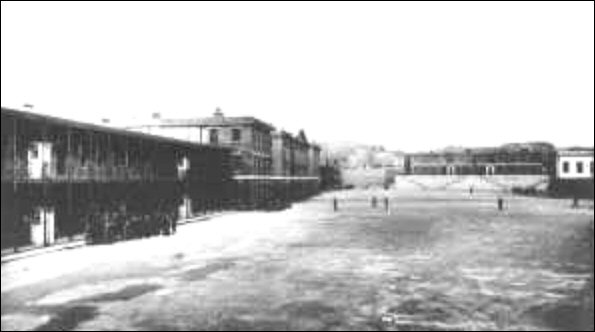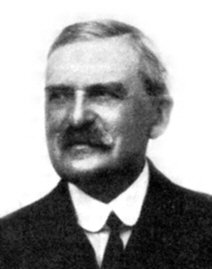6th Battalion Worcestershire Regiment - 1914 to 1918
On the outbreak of the First World War (1914) the 6th Battalion, commanded by by Lieut.-Colonel F. D. W. Lea-Smith (afterwards Lord Dudley of Halesowen), was a "Special Reserve" battalion which had been mobilised at Worcester and had proceeded to their allotted War Stations in the garrison of Plymouth (Raglan Barracks). There the half-trained "Special Reservists" completed their preparation for the field, and the Battalion developed into a specialised training organization, sending draft after draft abroad and receiving instead recruits of every kind. Throughout the early months of the War the Adjutant Captain W. L. Newcombe, was the mainstay of the organization, guiding the footsteps of the new young officers with tact and skill. |
Raglan Barracks, Plymouth |
As the war continued, the ranks of the training Battalion were swelled by convalescent officers and men returned from the front, who passed varying periods at home before they were again pronounced fit for service overseas. Thus the reserve Battalion was a temporary home at one time or another for nearly all of those who passed through the ranks of the fighting Battalions; and officers and men from all Battalions met there for a few brief weeks before parting on their voyage to the different theatres of war.
Besides that ever-changing personnel, the work of the Reserve Battalion was carried out by a small nucleus of their permanent staff, reinforced by certain older officers and N.C.O’s., who could not be passed fit for service in the field. That permanent staff continued, year after year, the thankless task of training the newly-appointed subalterns and the raw recruits who came to learn the rudiments of soldiering at their hands; and to them the Regiment owes a great debt.
In September 1916 Lieut.-Colonel B. R. Roche (formerly of the Bedfordshire Regiment) succeeded Lieut.-Colonel Lea-Smith in command of the 6th Battalion. Three months previously Captain G. L. Crowe had taken over the Adjutancy of the Battalion.
In the winter of 1917 a partial redistribution of the forces at home was carried out, and the 6th Battalion of the Regiment were moved from Plymouth to the East Coast. There the Battalion settled down to duty in the Harwich defences, with the Battalion stationed at Dovercourt. In the following year, a reduction in strength followed the despatch of troops to France, and the 6th Battalion was temporarily amalgamated with the 5th Battalion and was commanded of Lieut.-Colonel B. R. Roche.
On the 23rd February 1918 the amalgamated Battalions of the 5th and 6th moved to Newcastle-on-Tyne. On the 12th - 13th April 1919 the Battalion moved to Dublin and took over quarters in Portobello Barracks.
Shortly after the signing of the Treaty of Versailes, the Lord Lieutenant of Worcester decided to celebrate the return of Peace by a parade in Worcester of the County Forces. That parade took place on 23rd August 1919, and was certainly the largest gathering of military forces seen by the ancient City since the far-off days when the red-coats of Regulars and Militia and the green-jackets of the Volunteers marched past the old Duke of Cambridge on Pitchcroft field in the sunshine of 1887. The parade (on parade were 10,522, including 374 women) was commanded by Lieutenant General Sir Francis Davies K.C.B., K.C.M.G., K.C.V.O., the senior officer in Worcestershire, and was fully representative of the effort of the County in the War. Detachments of all Battalions of the Worcestershire Regiment were present and the 6th Battalion was represented by Captain S. W. Jones, Lieut. E. R. Newcomb, M.C., and 2/Lieut. E. C. Pepper carrying the Colours, plus 50 Other Ranks. For the first time the colours of all the four Regular Battalions were together on parade. The Royal Navy were represented, as also were the County Yeomanry and Territorial Artillery, the Volunteers, the W.A.A.C’s., the V.A.D’s., the Land Girls and the other women’s organisations.On the outbreak of the First World War (1914) the 6th Battalion, commanded by by Lieut.-Colonel F. D. W. Lea-Smith (afterwards Lord Dudley of Halesowen), was a "Special Reserve" battalion which had been mobilised at Worcester and had proceeded to their allotted War Stations in the garrison of Plymouth (Raglan Barracks). There the half-trained "Special Reservists" completed their preparation for the field, and the Battalion developed into a specialised training organization, sending draft after draft abroad and receiving instead recruits of every kind. |
Lieut.-General Sir Francis Davies |


